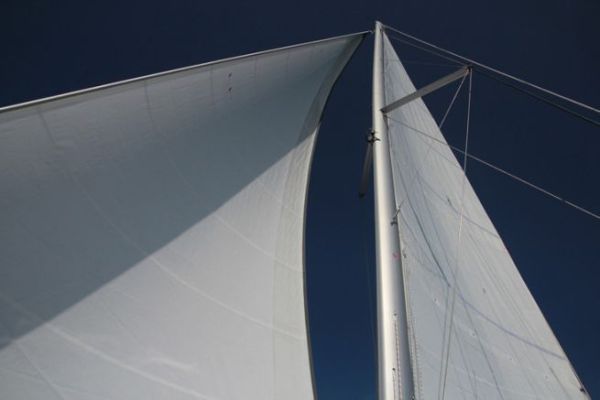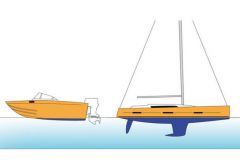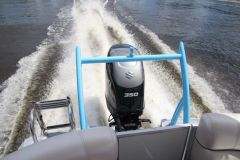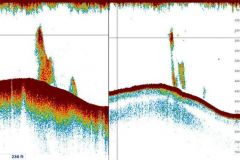The classic cut or Cross Cut
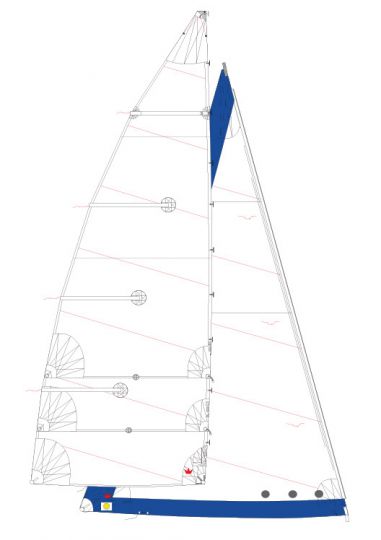
It is a matter of assembling fabric widths in a parallel way. The widths are cut with a slight rounding which, when assembled, creates the hollow of the sail (see the drawing below with the accentuated shape of the widths).
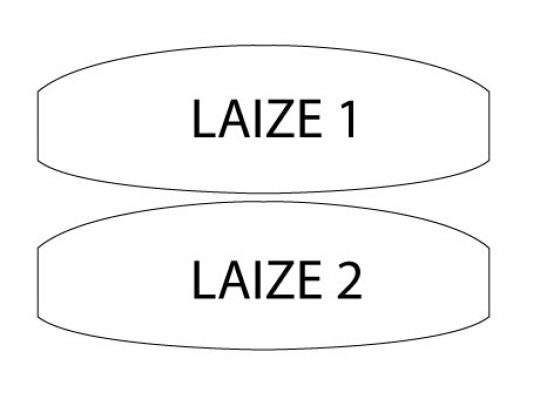
The Cross Cut is well suited for furling sails (jib or mainsail). Indeed, even partially rolled, the fabrics always work in the same direction.
Today, composite fabrics (Flex or equivalent) have been developed. They work almost uniformly in all axes.
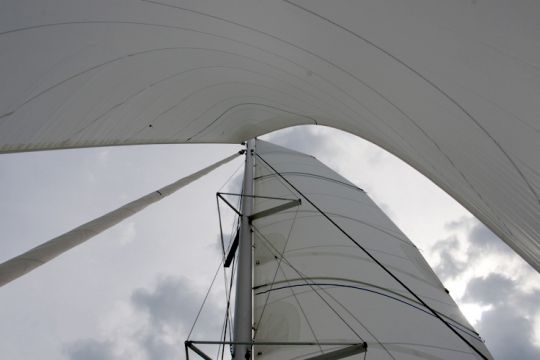
The oriented or triradial cut

A tri-radial sail is an oriented cut. This cut allows the fabrics to be oriented along a given axis. The fabrics start from the three points (halyard, tack and sheet) and "radiate" towards the center. The fabrics then work in the direction of the effort, optimizing the distribution of the efforts from the 3 points of fixation.
These sails are therefore more efficient (less deformation under stress), but they do not like furlers. Indeed, they must be fully unfurled to be efficient. More difficult to build, with more sewing, triradial sails are also more expensive.
